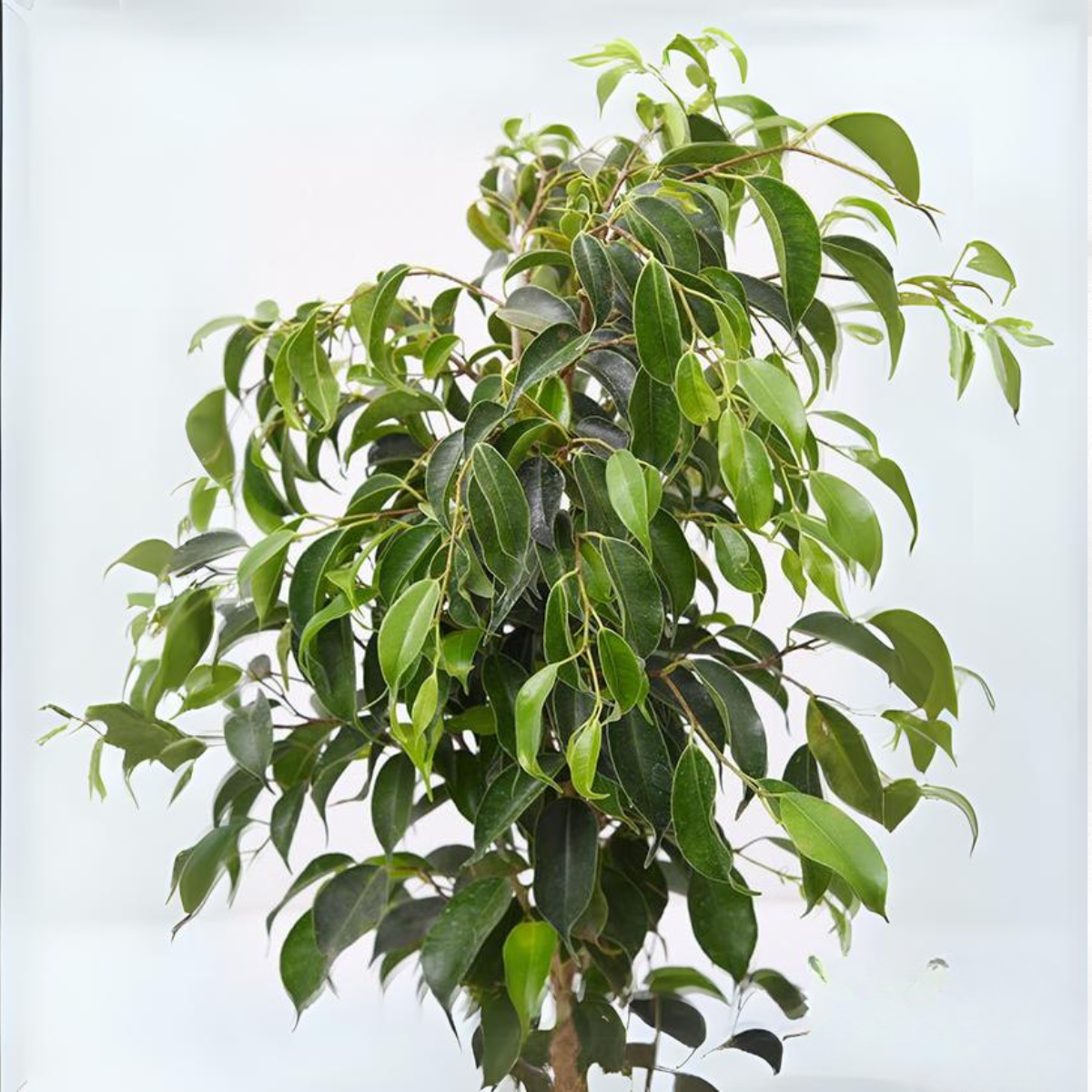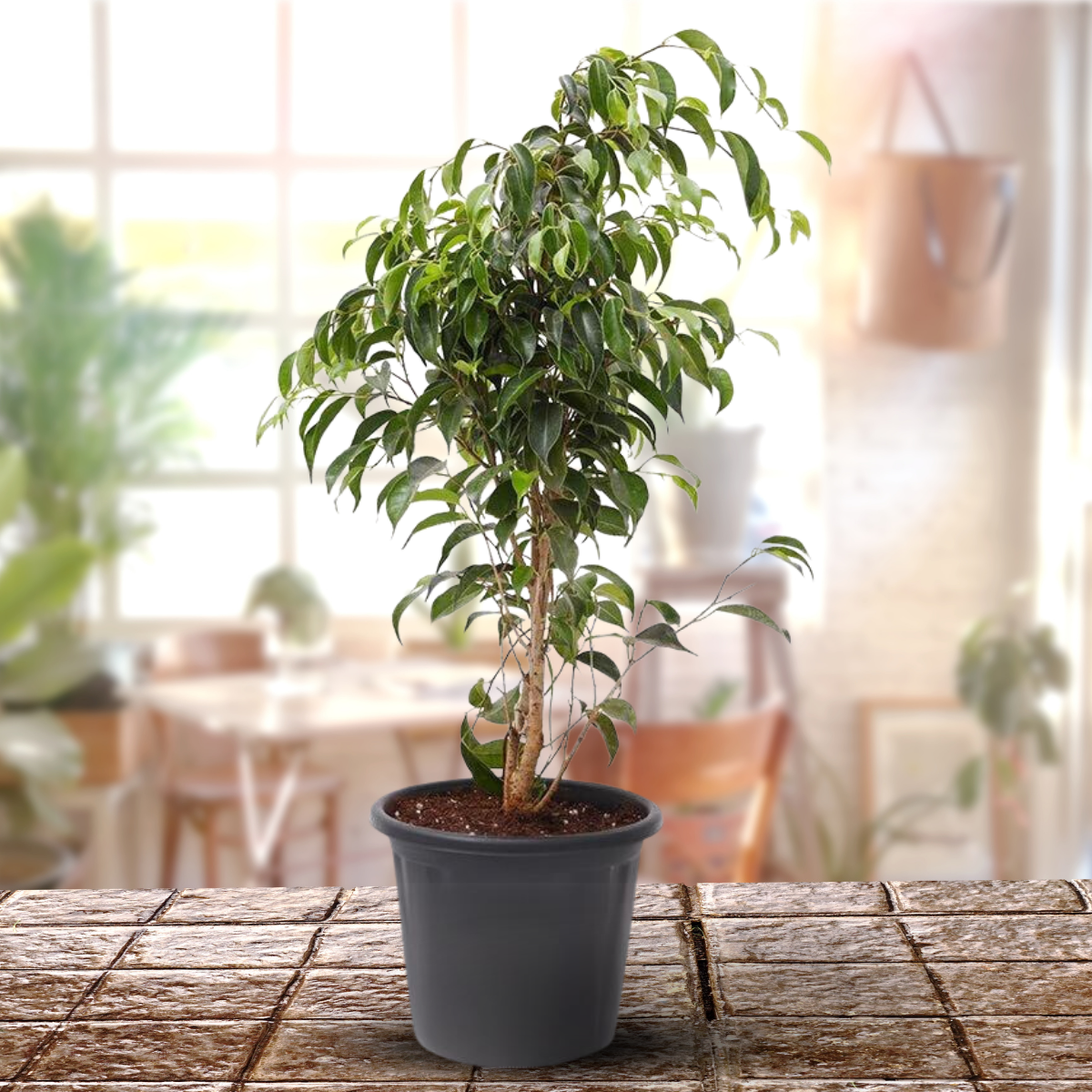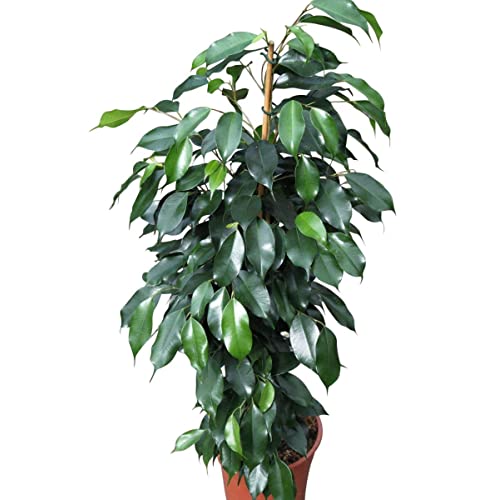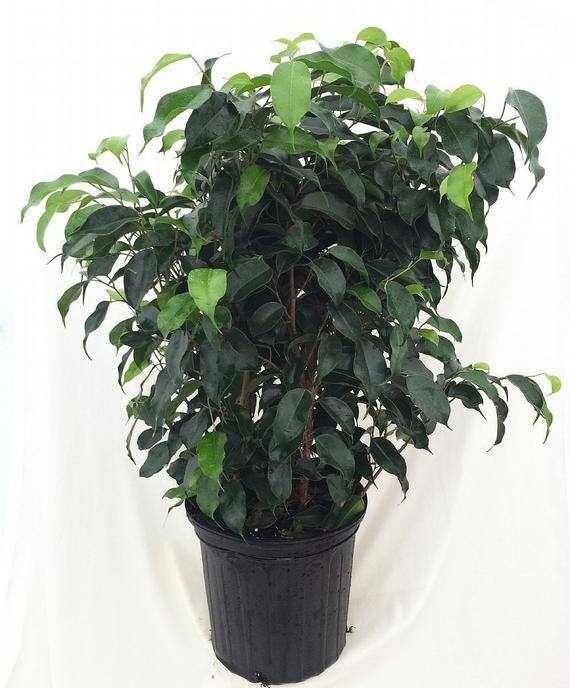




Green Paradise® Benjamina Black Ficus Sapling Plant
Guaranteed Safe Checkout
Green Paradise Offers Beautiful black
Ficus sapling
About Benjamina Black Ficus
Ficus benjamina, generally known as the weeping fig or Benjamin fig, is a popular evergreen tree in the family Moraceae. It is native to Southeast Asia and is known for its graceful drooping branches and glossy, dark green leaves. The plant is widely cultivated as an ornamental tree and is often used as a houseplant or for landscaping purposes.
Here are some key features and characteristics of the Ficus benjamina plant:
Appearance:
-
Ficus benjamina is a medium-sized tree that can reach a height of 30 to 60 feet (9 to 18 meters) in its natural habitat, although it is often pruned to a more manageable size as a houseplant.
-
The tree has a dense crown with arching branches that give it a weeping or cascading appearance.
-
The leaves are oval-shaped, leathery, and glossy, measuring around 2 to 5 inches (5 to 13 centimeters) in length.
-
They are typically dark green, although some cultivars may have variegated or lighter-colored leaves.
Indoor and Outdoor Cultivation:
-
Ficus benjamina is a popular choice for indoor plants due to its tolerance to low light conditions.
-
It can thrive in a variety of light levels, from bright indirect light to partially shaded areas.
-
When grown indoors, it is important to provide the plant with adequate space to accommodate its growth.
-
Outdoors, Ficus benjamina can be cultivated in tropical and subtropical regions, where it can be used as a shade tree or as part of a landscape design.
Environmental Conditions:
-
Ficus benjamina prefers a warm and humid environment. It thrives in temperatures ranging from 65 to 75°F (18 to 24°C) but can tolerate temperatures as low as 50°F (10°C).
-
The plant is sensitive to cold drafts and sudden temperature changes, so it is important to protect it from cold drafts near doors or windows.
-
It also benefits from regular misting to increase humidity levels, especially when grown indoors.
Care and Maintenance:
-
Proper care is essential for the health and well-being of Ficus benjamina.
-
Following are some recommendations to remember.
Watering:
-
Maintain a consistent watering schedule, allowing the top inch (2.5 centimeters) of soil to dry out between waterings.
-
Avoid overwatering or letting the factory sit in standing water, as it can lead to root spoilage.
Light:
-
Ficus benjamina thrives in bright, indirect light but can tolerate lower light conditions.
-
Avoid placing it in direct sun, as it can scorch the leaves Rotate the plant periodically to ensure even growth.
Soil:
-
Well-draining soil is crucial for Ficus benjamina.
-
An admixture of peat moss, perlite, and regular replanting soil works well.
-
In order to avoid waterlogging, make sure the pot has drainage holes.
Pruning:
-
Regular pruning aids in preserving the plant's desired size and shape.
-
It is best done during the spring or early summer.
-
Use clean, sharp pruning shears to remove dead or diseased branches, and shape the plant as desired.
Fertilization:
-
Ficus benjamina benefits from regular fertilization during the growing season.
-
Use a balanced, water-answerable toxin according to the manufacturer's instructions.
Potential Challenges:
-
Ficus benjamina is generally a hardy plant, but it can be susceptible to certain pests such as aphids, mealybugs, and scale insects.
-
Inspect the leaves regularly for signs of infestation and take appropriate measures, such as using insecticidal soap or neem oil, to control the pests.
-
Additionally, sudden changes in light, temperature, or humidity can cause leaf drop, a common reaction of the plant to stress.
Please note that while Ficus benjamina is a beautiful and popular plant, it is also considered toxic to cats, dogs, and some other animals. If you have pets, it is essential to keep them away from the plant or choose a pet-safe alternative.
Overall, Ficus benjamina is a versatile and attractive plant that can add a touch of elegance to both indoor and outdoor spaces. With proper care and attention, it can thrive and provide years of enjoyment to plant enthusiasts.
How To Grow Benjamina Black Ficus
Ficus benjamina 'Black Knight.' It is a popular variety of weeping fig tree that features dark green, glossy leaves.
Here are some guidelines to help you grow and care for a Ficus benjamina 'Black Knight':
Light:
-
Place your Ficus benjamina in a location with bright, indirect sunlight.
-
Avoid placing it in the sun directly because the leaves may become burned.
-
However, the plant can tolerate some shade as well.
Temperature:
-
Ficus benjamina prefers moderate temperatures between 60°F to 75°F (15°C to 24°C).
-
cover it from cold drafts and temperature axes.
Watering:
-
Keep the soil unevenly wettish, but not doused .
-
Before sodding again, give the top inch of soil a chance to slightly dry out.
-
Overwatering can lead to root spoilage, while underwatering can beget splint drop.
-
Acclimate your watering frequence grounded on the specific requirements of your factory and the conditions in your home.
Humidity:
-
Ficus benjamina thrives in moderately high humidity.
-
If the air in your home is dry, consider using a humidifier or placing the plant on a tray filled with water and pebbles to increase humidity around it.
-
befogging the leaves sometimes can also help.
Soil:
-
Use a well-draining replanting blend that retains some humidity but does not come
-
doused. A mixture of peat moss, perlite, and sand works well for Ficus benjamina.
Fertilizer:
-
Feed your Ficus benjamina with a balanced, water-soluble houseplant fertilizer once a month during the growing season (spring and summer).
-
Follow the package instructions for the applicable lozenge.
-
Reduce or stop fertilizing during the winter months when the plant is dormant.
Pruning:
-
Regular pruning helps maintain the desired shape and size of your Ficus benjamina.
-
You can trim back any leggy or overgrown branches to encourage bushier growth.
-
Prune selectively, and avoid removing more than one-third of the plant's foliage at once.
Pests:
-
Aphids, mealybugs, and spider mites are some common houseplant pests to watch out for.
-
If you notice any signs of infestation, treat the plant with an appropriate insecticidal soap or neem oil, following the instructions on the product.
Repotting:
-
As your Ficus benjamina grows, it may outgrow its pot.
-
Repot the plant into a slightly larger container when the roots become crowded.
-
This is typically done every 2-3 years during the spring season.
Caution:
-
Ficus benjamina sap can be irritating to the skin, and the plant is toxic to cats and dogs if ingested.
-
Take care when handling the plant and keep it out of reach of pets.
By following these care instructions, you should be able to grow a healthy and thriving Ficus benjamina 'Black Knight.' Remember to observe your plant closely and make adjustments to the care routine as needed to ensure its well-being.




